Snapdragon 845, 6 Gigs of RAM, 4,000 mAh battery in just $300
In 2014, OnePlus One, a phone described as the “Flagship Killer.” It was a budget phone with flagship specs. Because of the affordable price of $299, the phone became popular among smartphone enthusiasts, and today we know the company as a popular smartphone manufacturer OnePlus. Pocophone F1 or POCO F1 is an affordable phone that comes with Snapdragon 845 and 6 Gigs of RAM in the base model. Pocophone is a new sub-brand from Xiaomi, and they are selling this affordable phone in India with “POCO F1” branding and as “Pocophone” internationally. The phone comes with compelling specs with a price tag of just $300. Snapdragon 845 is the heart of recent flagship phones like Google Pixel 3, OnePlus 6T, and Huawei Mate 20 Pro. Here is the Pocophone F1 review.
Xiaomi Pocophone F1 Review
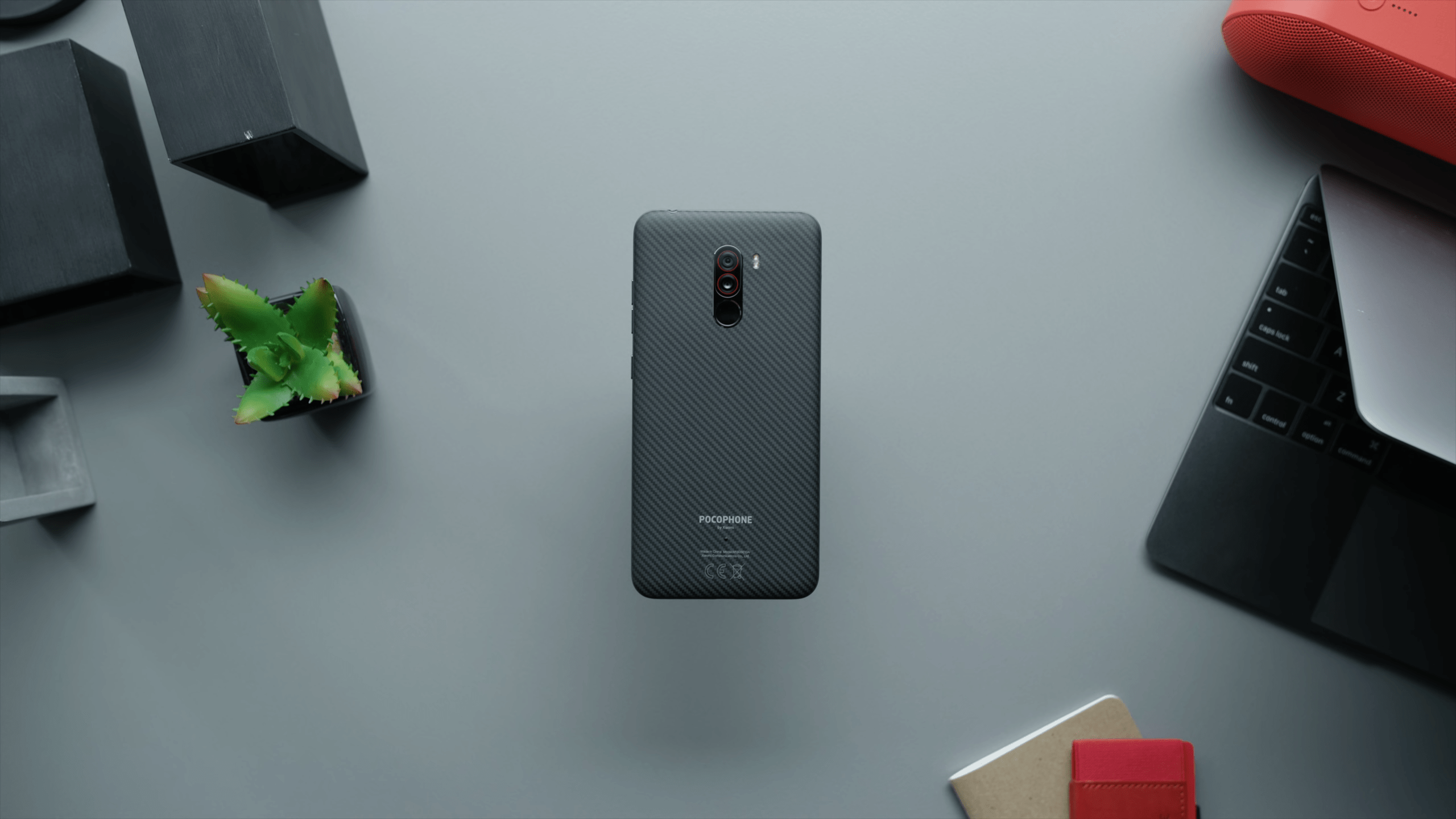
Think about a phone that meets all your needs and saves your pocket. A Snapdragon 845 processor, 6 Gigs or more RAM, 128 Gigs or more storage and a great camera. All these specs are of flagship phones which cost more than $700. But if you can get a phone with these specs under $500, then it seems like a dream come true. You are not getting a flagship phone but a budget phone with some compromises, but they don’t matter much for most people.
Pocophone F1 is a new brand from Xiaomi which costs just $300 and is offering Snapdragon 845 processor with 6 Gigs of RAM to rival the previous flagship killer, OnePlus 6/6T. The entry-level phone comes with an optimized version of MIUI running on top of Android Oreo 8.1 that performs well on Pocophone. Here are the key specs.
Key Specs
| Display | 6.18″ IPS LCD (1080 x 2246), 18.7:9 ratio |
| Camera | Main Camera: 12 MP, f/1.9, dual pixel, 5 MP, depth sensor, f/2.0, Dual LED Flash |
| Front Camera: | 20MP, f/2.0, HDR |
| Chipset | Octa-core Qualcomm Snapdragon 845, Adreno 630 |
| Memory | microSD up to 256 GB 6/8GB RAM, 64/128/256 GB Internal Storage |
| Battery | Non-removable 4,000 mAh (Li-Polymer) |
| Operating System | MIUI 10 (POCO), Android Oreo 8.1 |
| Sensors | A fingerprint sensor, Infrared Face Recognition, Accelerometer, Gyro, Proximity, Compass, Barometer |
| Special Features | Infrared Facial Recognition |
| Bummers | Notch, Plastic Build |
| Colors | Graphite Black, Steel Blue, Rosso Red, Armored Edition with Kevlar |
| Price | Starts from $300 |
The design and build
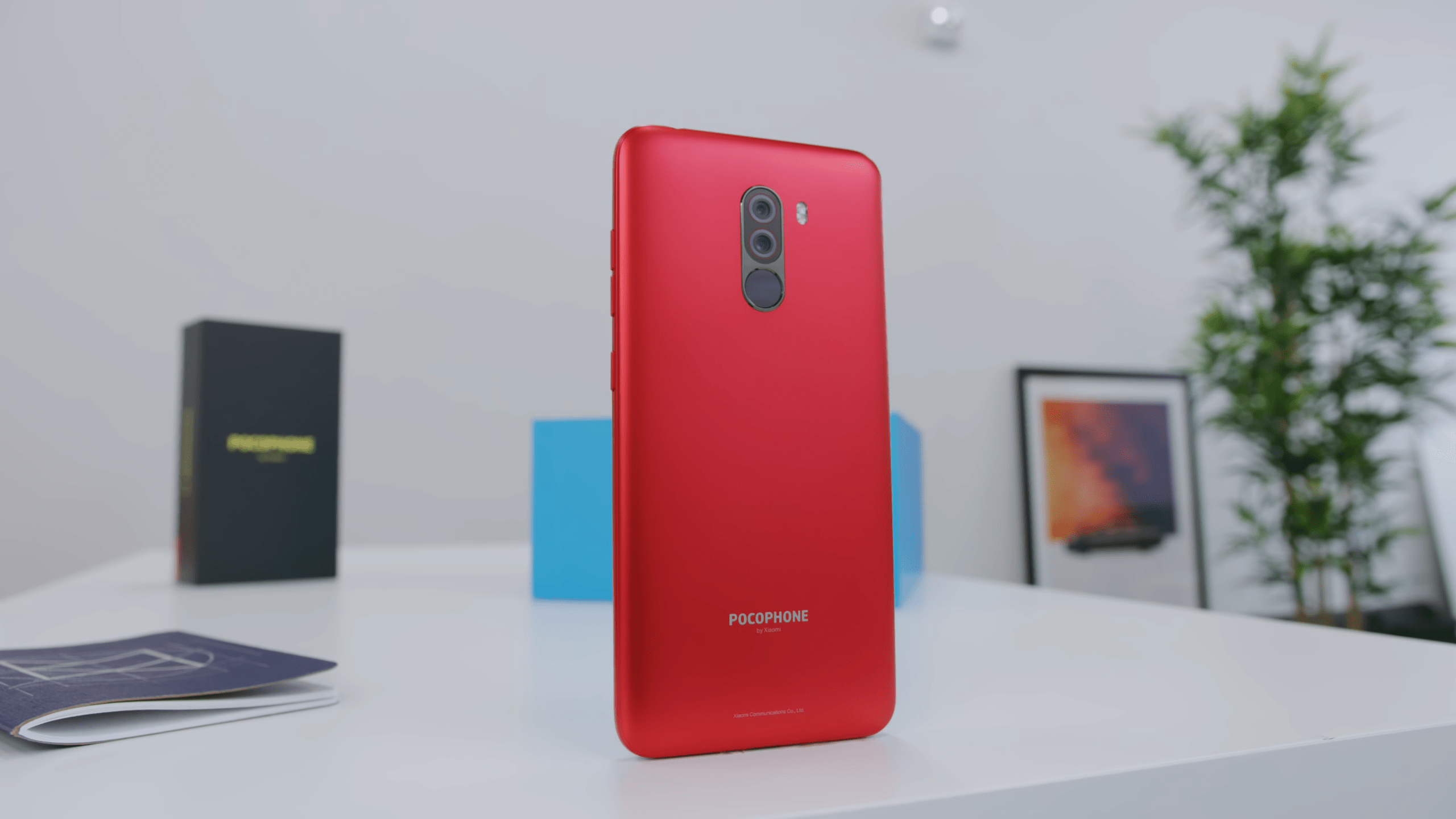
With this price tag, Pocophone comes with a cheap design as we can expect from an entry-level phone. We can’t expect premium build quality from the company as the price is already $300. The phone has plastic build and seems fair as compared to the competition in this price range.
It has a polycarbonate back which feels soft. The plastic back has one advantage, when dropped, it will get scratches, unlike glass backs which get shattered if dropped. The graphite black version of Pocophone has a metallic feel, but it doesn’t feel like other premium smartphones. The polycarbonate version comes in Graphite Black, Rosso Red, and Steel Blue.
These versions come with a protective case inside.
The Kevlar back Pocophone feels more like a Droid Razr. The phone has solid Kevlar build and hence called as “Armored Edition.” This version can be used without a protective case and is only available in black color.
An aluminum frame holds the phone with tactile power and volume buttons on sides. The SIM jacket is on the other side. The fingerprint sensor is mounted on the back of the phone under dual camera modules.
We can’t ignore the big notch while talking about the design of the phone. Last year, Apple released iPhone X with a notch and everyone seems to copy the trend. Now, Android smartphones like Huawei Mate 20 Pro, Google Pixel 3 XL and OnePlus 6T are coming with notch display. Pocophone is not an exception. The mid-range phone comes with a big notch and a chin on the bottom of the phone. The front head of the phone also doesn’t have small bezels. Heavily rounded corners are making bezels even more prominent. But Xiaomi tried to mimic the phone as every other premium phone out there.
Display
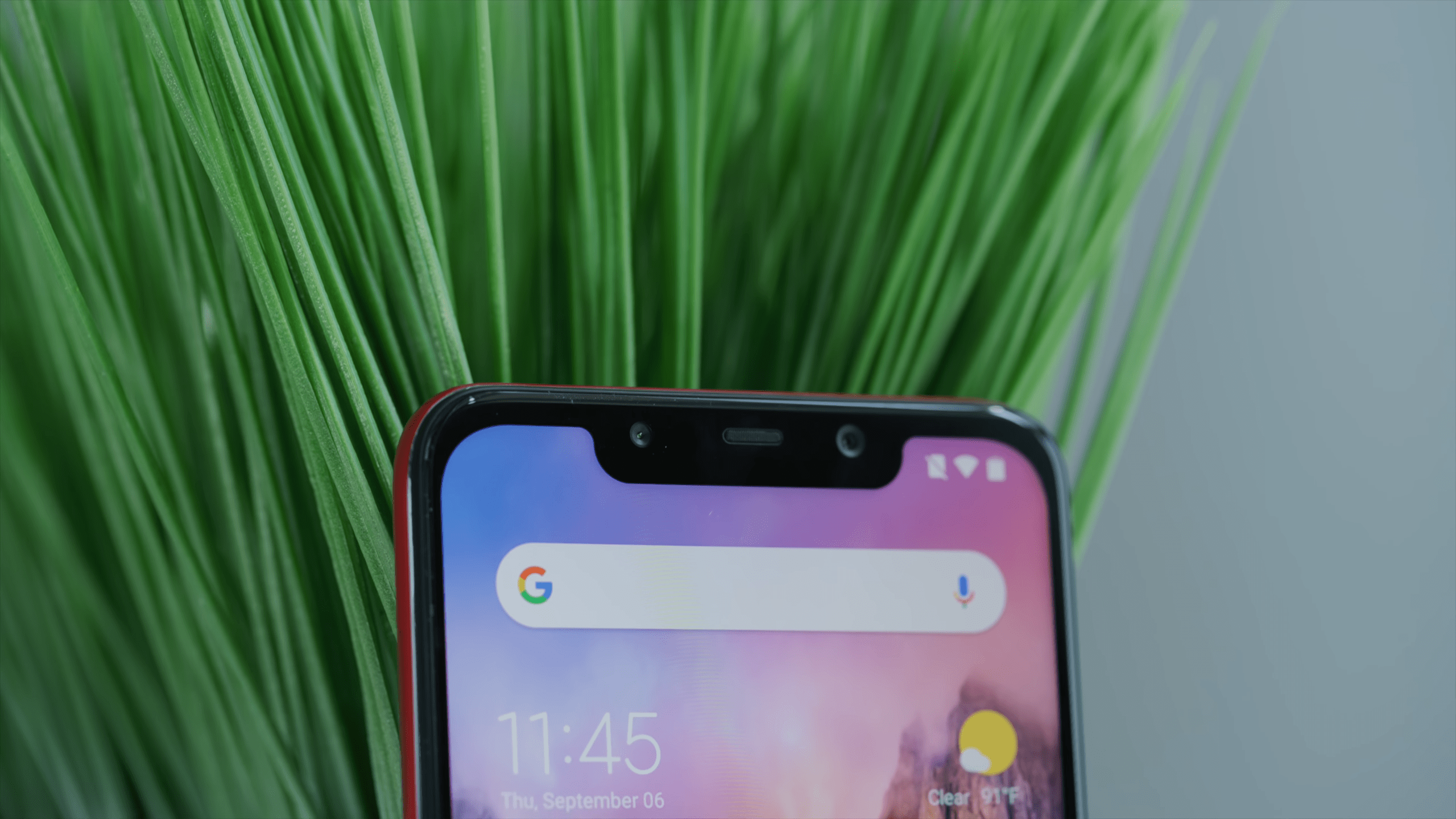
With a screen resolution of 1080 x 2246 pixels, Pocophone F1 comes with a 6.18” display. It has a pixel density of 416 dpi and screen ration of 18:9. The LCD panel has nice colors, and viewing angles are average, but an OLED panel would’ve worked so much better than this. However, considering the price point, the phone has a mediocre display.
Camera
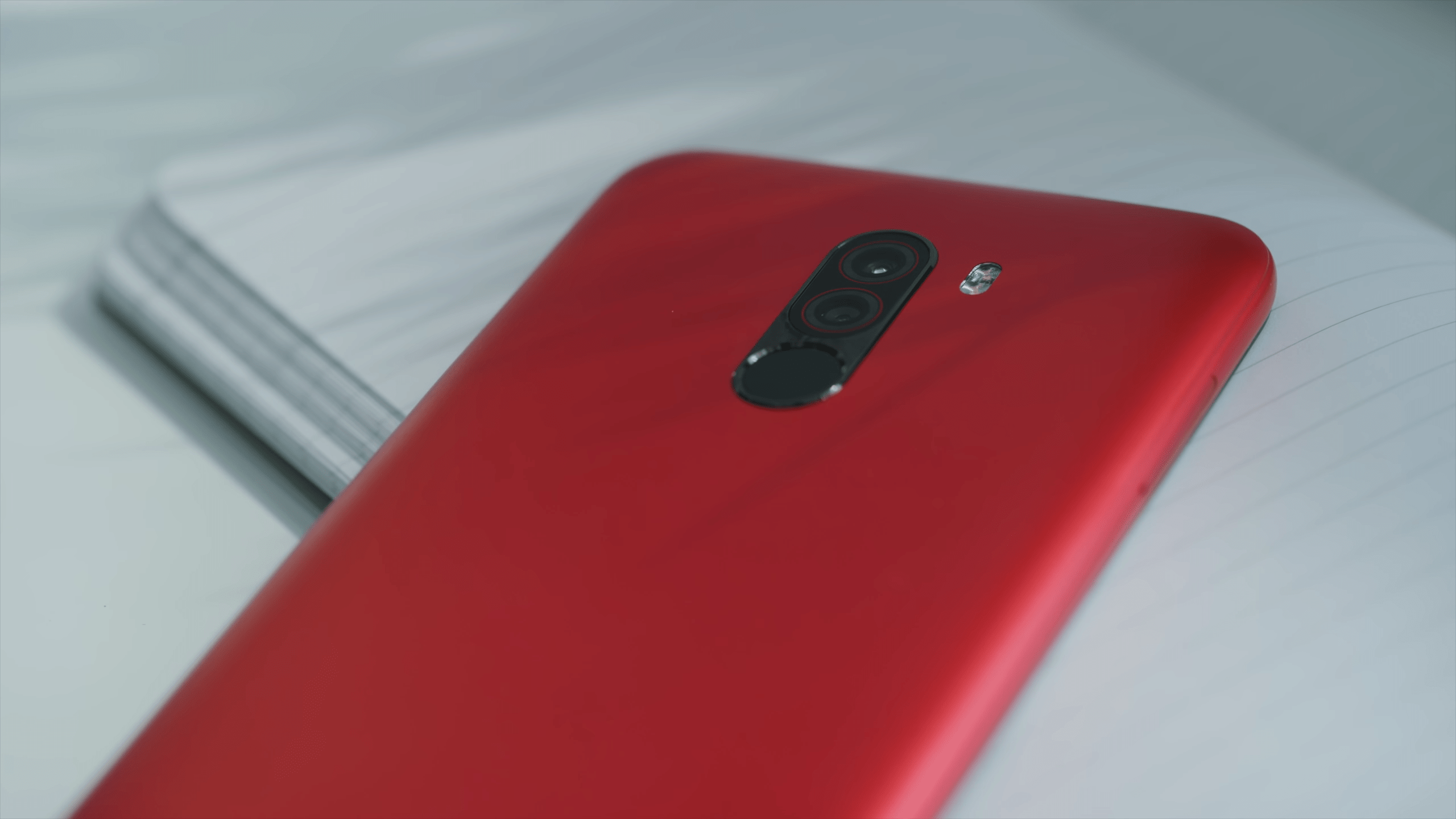
Pocophone F1 is rocking a dual camera of 12MP and 5Mp sensor on the back. The second lens of 5Mp is for depth information. The camera of the phone is pretty average. The colors, dynamic range is average if we compare it with other mid-range phones. However, the performance seems inconsistent.
With more exposure to optimal light, Pocophone captures great shots as compared to the other mid-range phones, but images are inconsistent. Sometimes you get a great picture, and sometimes it misses a lot of things. However, unlike other mid-range phones, the portraits on the Pocophone are a bit impressive. The edge detection and bokeh looks fine.
With Pixel binning technology of Xiaomi phones, the selfies from Pocophone F1 are “okay” but not mind-blowing. The cameras are near average but not exceptional, but it is justified according to the price point.
Hardware
The phone comes with premium hardware, unlike the build quality. At the heart of Pocophone lies Snapdragon 845 which is the latest flagship processor by Qualcomm. For graphics, Pocophone runs on Adreno 630 GPU. With 6 GB of RAM, the phone delivers snappy performance and fast animations.
Software
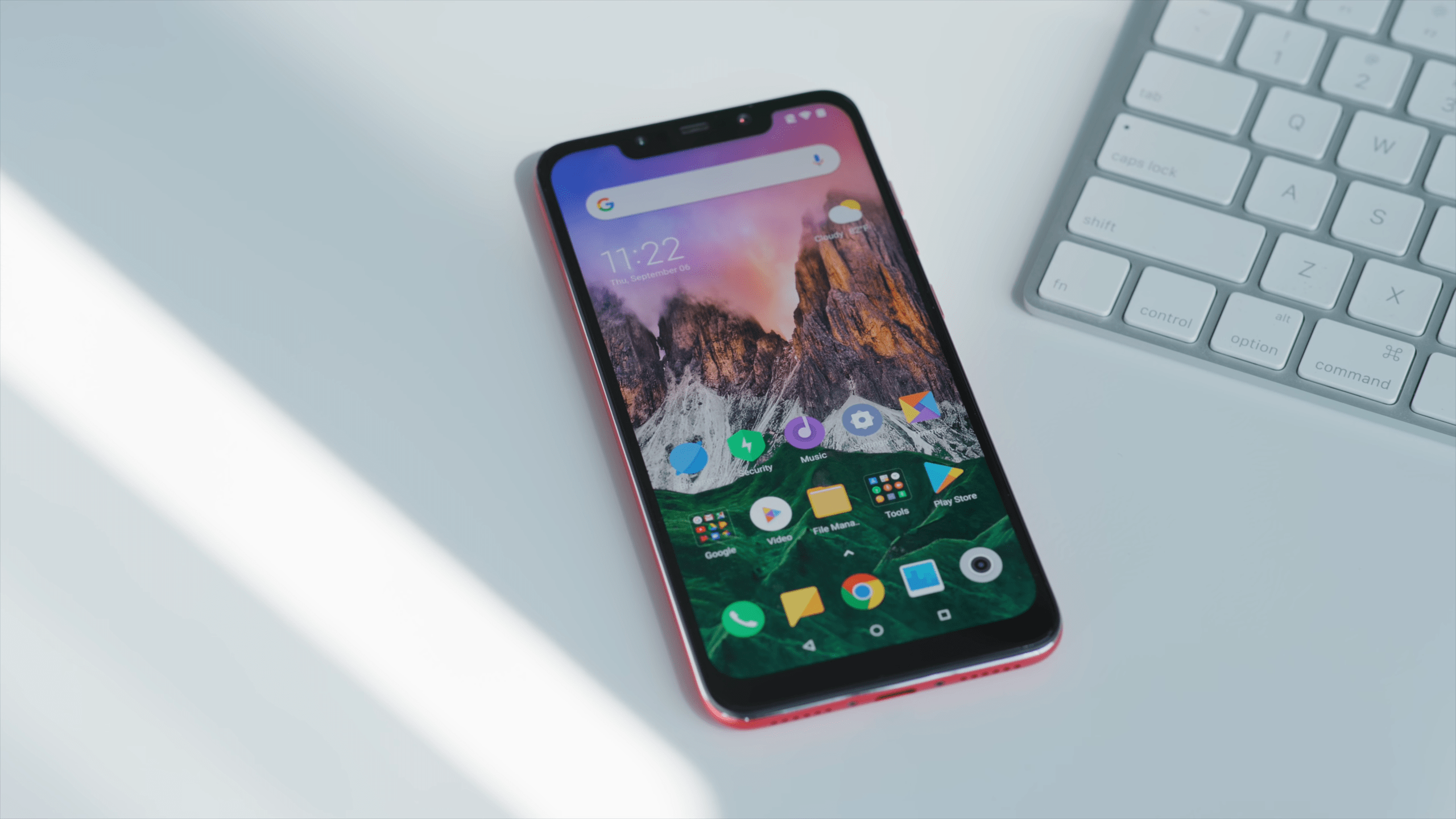
Xiaomi Pocophone F1 is running MIUI 10 on top of Android Oreo 8.1. The Poco launcher is one of the best we have seen in any Xiaomi phone. It is simple with a lot of useful features. With Snapdragon 845 and 6GB RAM, the phone has an edge and performs well. Poco Launcher looks more like Stock Android; it’s an attempt to be more like Oxygen OS and challenge them.
Stock Android is known for snappy performance and no lag, hence Xiaomi wants to attract Stock Android fans by more useful features in Poco Launcher. Pocophone users can also change themes. The customized drop down notification panel looks appealing with a blur effect. Xiaomi also promised Android Pie 9.0 update for Pocophone at the end of this year. So, it’s not a phone that the company will leave after a few months.
Battery
With 4,00 mAh battery, Pocophone F1 has promising battery life. Because of Snapdragon 845, the phone’s battery life is impressive as it should be. An optimized version of MIUI on Pocophone also saves a ton of battery.
Pros and Cons
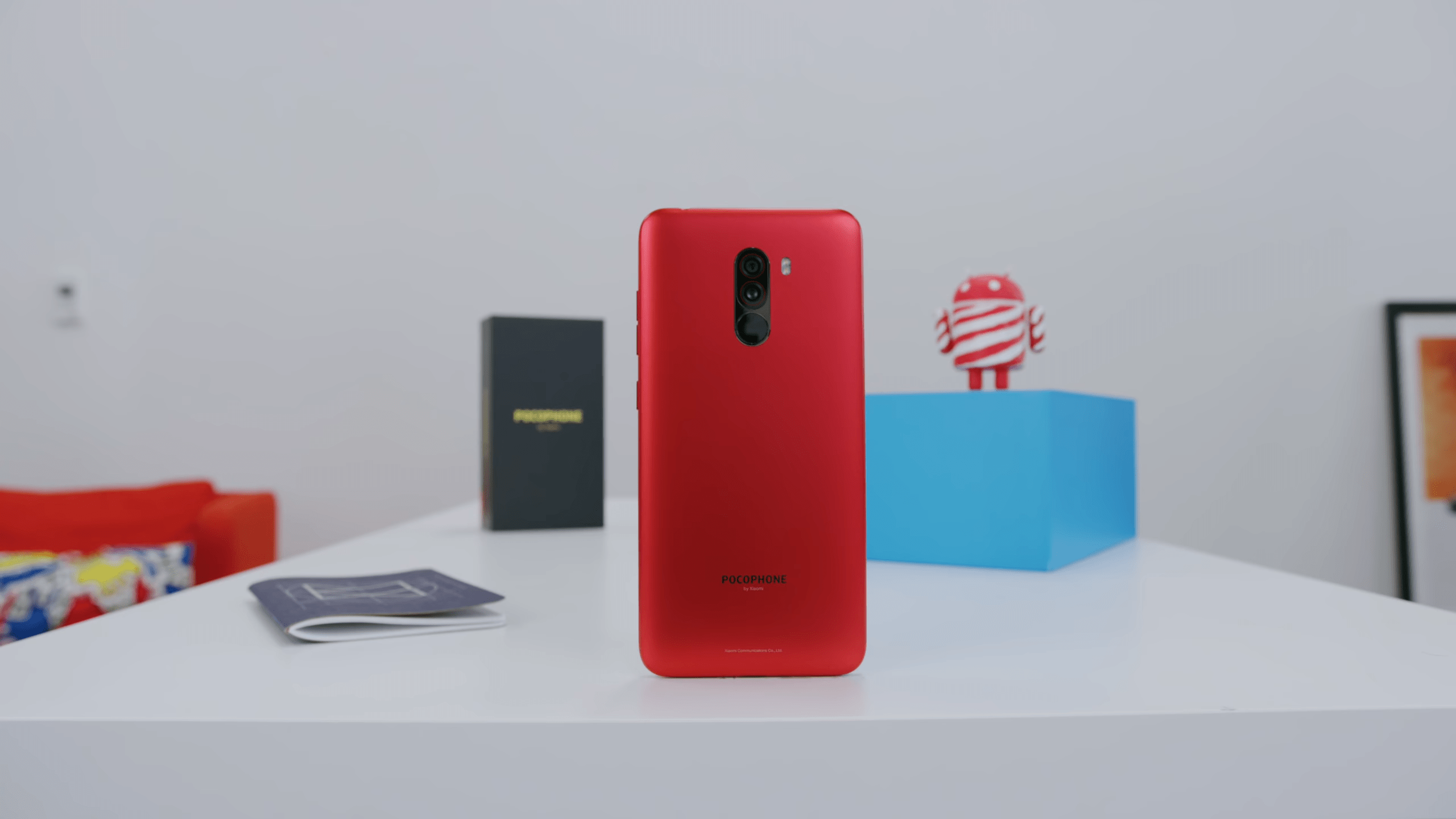
The phone doesn’t have NFC which is a bummer for those who often use Android Pay. The USB Type-C in the Pocophone F1 is a plus point as many mid-range phones cut to meet the price. Pocophone F1 comes with a single speaker, and it doesn’t sound clear when gets loud.
The infrared face unlock sensor works fast and accurately, but the downside of infrared is that it works better only in lighting conditions. The fingerprint is placed right and works pretty fast, unlocks the phone quickly.
If we talk about speed and performance, the phone meets the expectations. Because of 6 Gigs of RAM and Snapdragon 845, the phone is snappy and on par with the flagship phones of 2018. The battery life on Pocophone F1 is also great. With 4,000 mAh battery, it works well till the end of the day. It also has the advantage of optimized software and Snapdragon 845 which is designed in a way that uses less battery.
Verdict
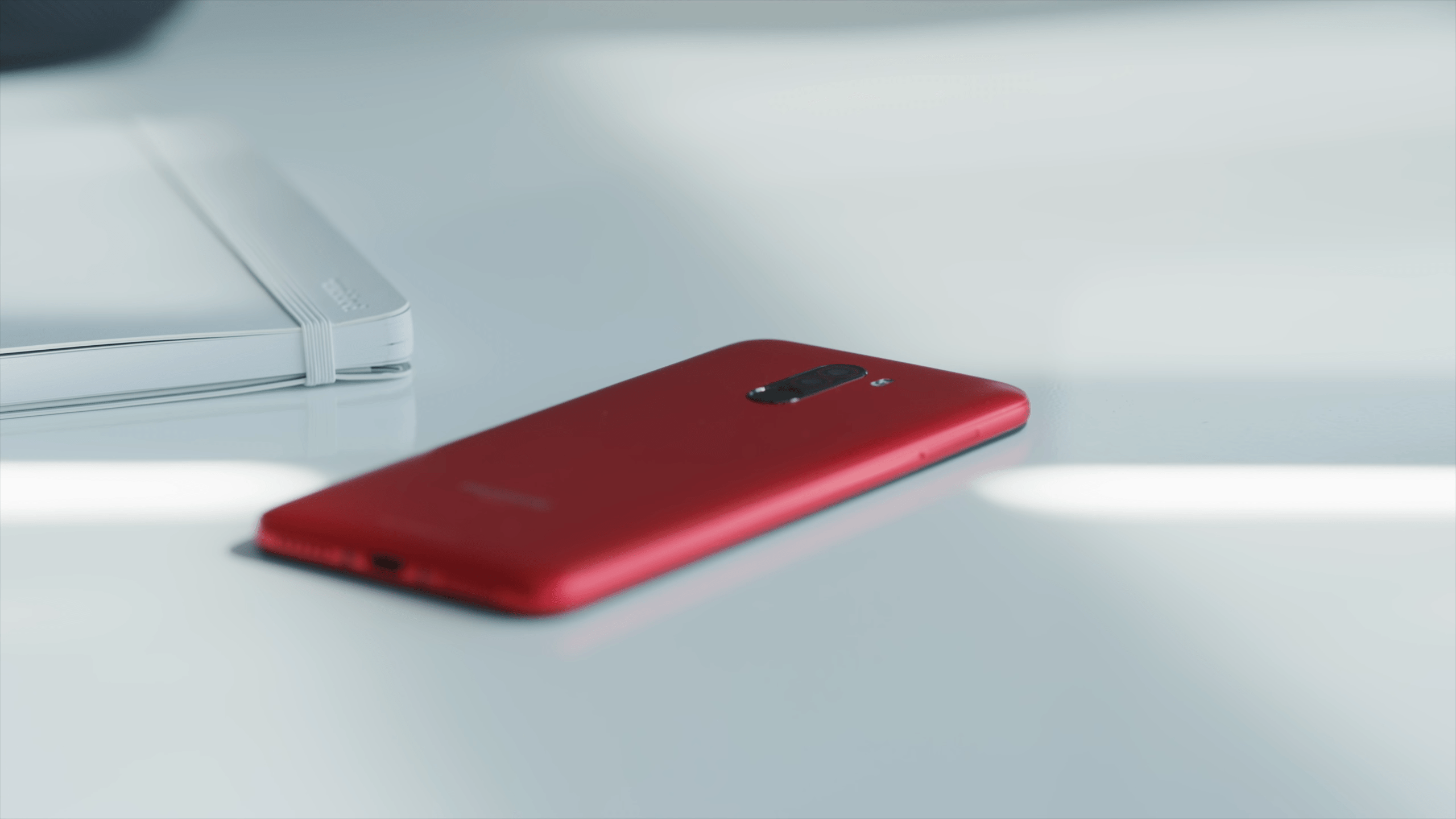
The phone comes with a lot of compromises. If you are into Android pay, then Pocophone is not the phone for you. It lacks NFC, so payments via NFC won’t work. But, if you are looking for a long battery life that takes you throughout the day or a phone with snappy performance in just $300 budget, pick up Pocophone F1. Otherwise, the phone doesn’t excel at anything besides great performance and battery. The camera is below average; the build quality is not premium, and the display is just fine.
After this Pocophone F1 review, will you pick it? Let us know what do you think about Pocophone F1 in the comments below.
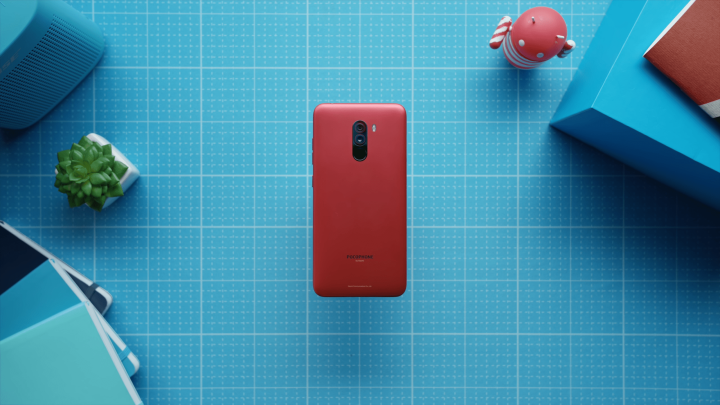



Share Your Thoughts